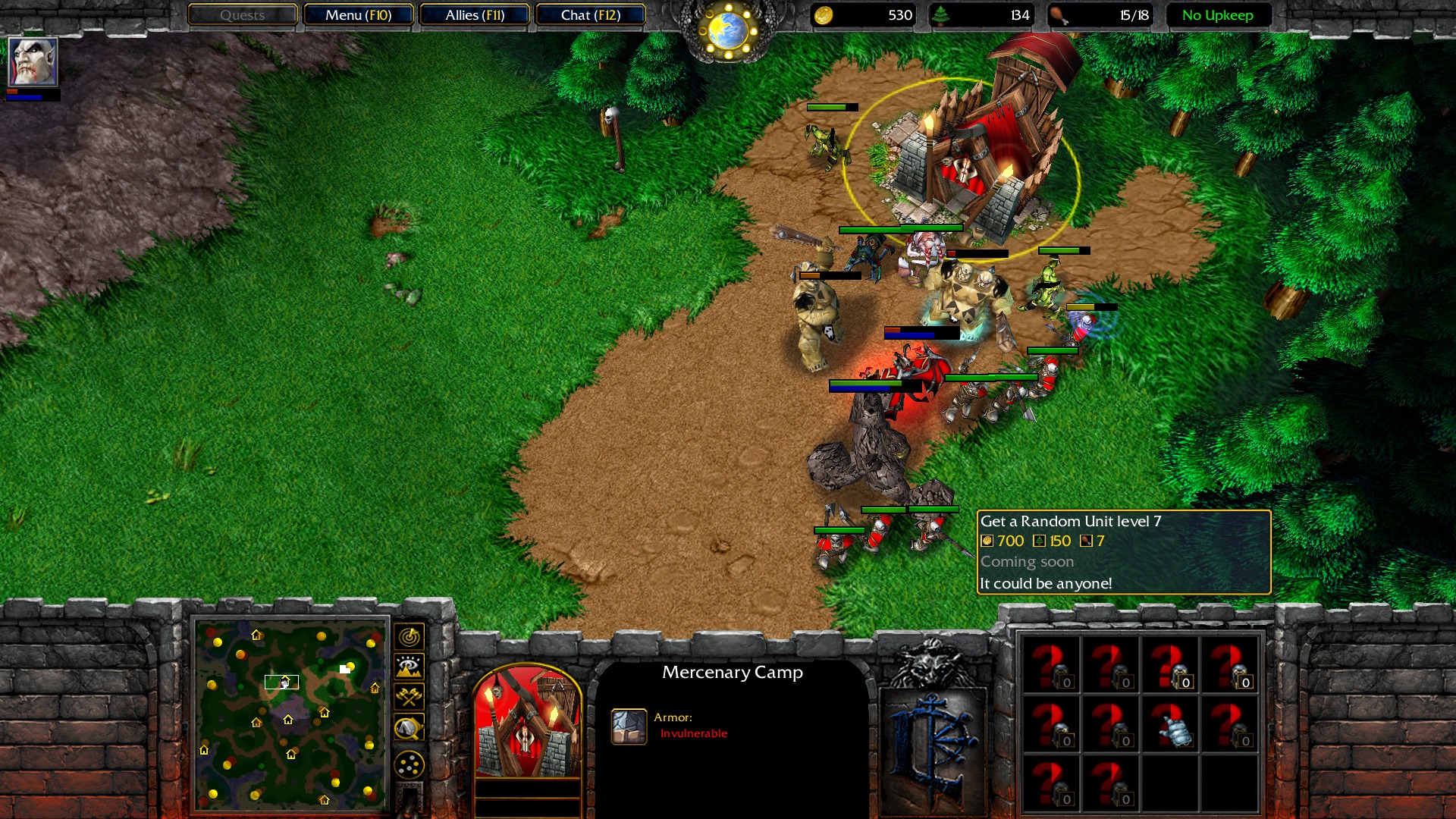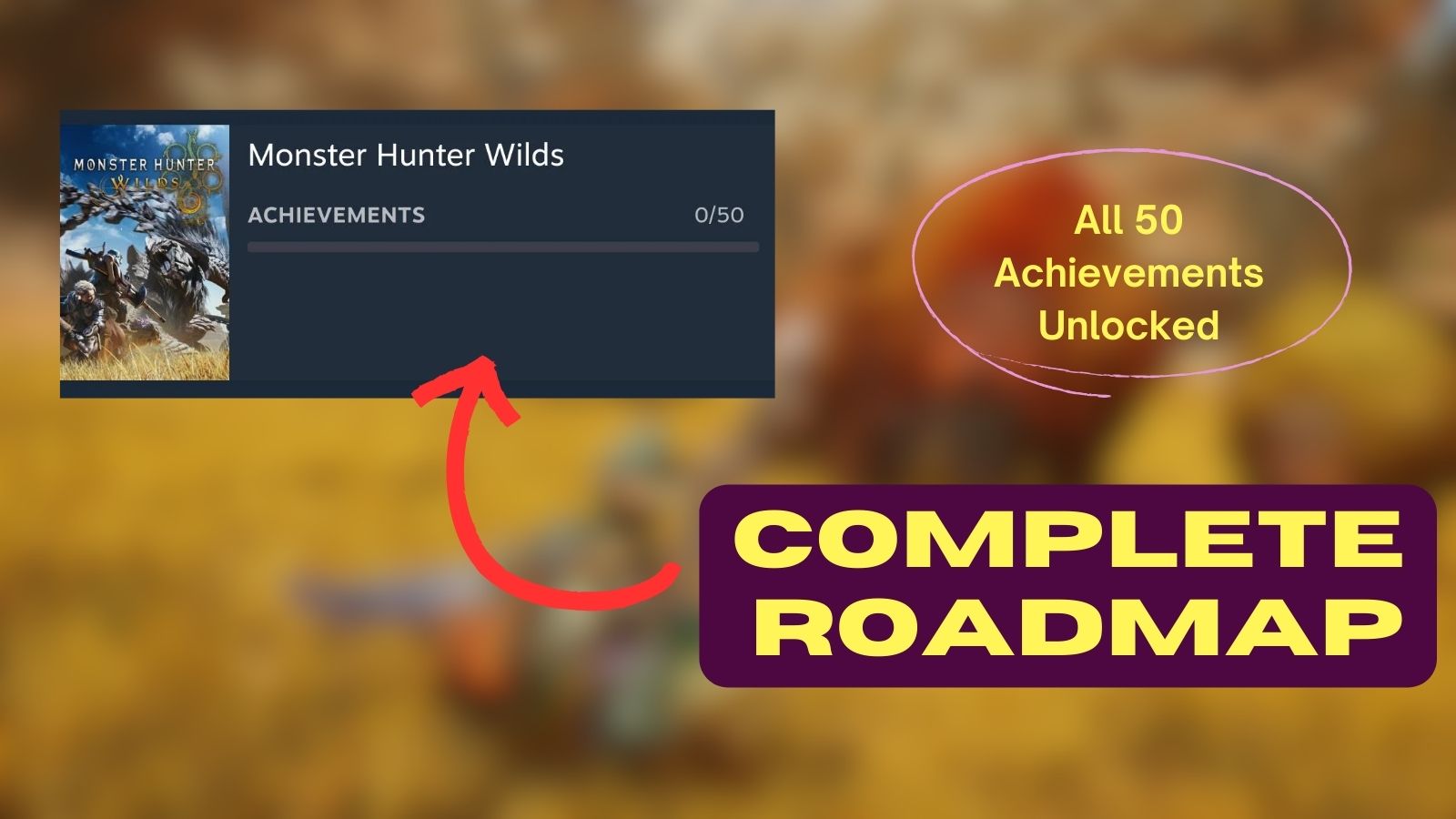When it comes to competitive Warcraft 3, the battlegrounds are just as important as the players themselves. Released by Blizzard in 2002, this fan-favorite strategy game has fascinated us for over two decades.
Its everlasting popularity comes from the dynamic gameplay, iconic factions, and a passionate community. However, it’s the carefully curated map pool that adds an extra layer of depth to the competitive scene.
These maps, each with unique features and strategic opportunities, have become the stuff of legend.
In this article, we’ll be ranking the most iconic Warcraft 3 competitive maps that have shaped the game’s history.
Let’s get started –
Criteria for Ranking Maps
1. Balance Between Races
- Maps must provide a fair playing field for all races
- Imbalances occur when certain races gain unfair advantages due to map features
- Examples: Amazonia favors Night Elves and Humans, while Northern Isles offers better balance
2. Creep Camp Placement and Variety
- Placement, type, and strength of creep camps are key factors
- Maps with diverse low-level creep options create strategic depth
- High-value creep camps create tension points
- Unique features like Marketplace add variety
3. Expansion Opportunities
- Potential for economic growth through expansions is crucial
- Balanced maps have equally reachable or contestable expansions
- Maps with easily secured expansions can lead to stagnant gameplay
4. Map Layout and Pathing
- Overall structure and design determine pacing, pathfinding, and strategic possibilities
- Dynamic maps with multiple paths enhance gameplay depth
- Short rush distances encourage faster aggression, while longer distances favor late-game strategies
5. Potential for Interesting Strategies and Gameplay
- Maps should create unique and exciting scenarios
- Hit-and-run tactics and comeback potential add depth
- Standout traits contribute to memorable gameplay moments
- Large gold mines and late-game expansions foster epic matches
- Flexible map layouts allow for creative strategies and adaptations
Tier D: The Worst Maps
A. Amazonia
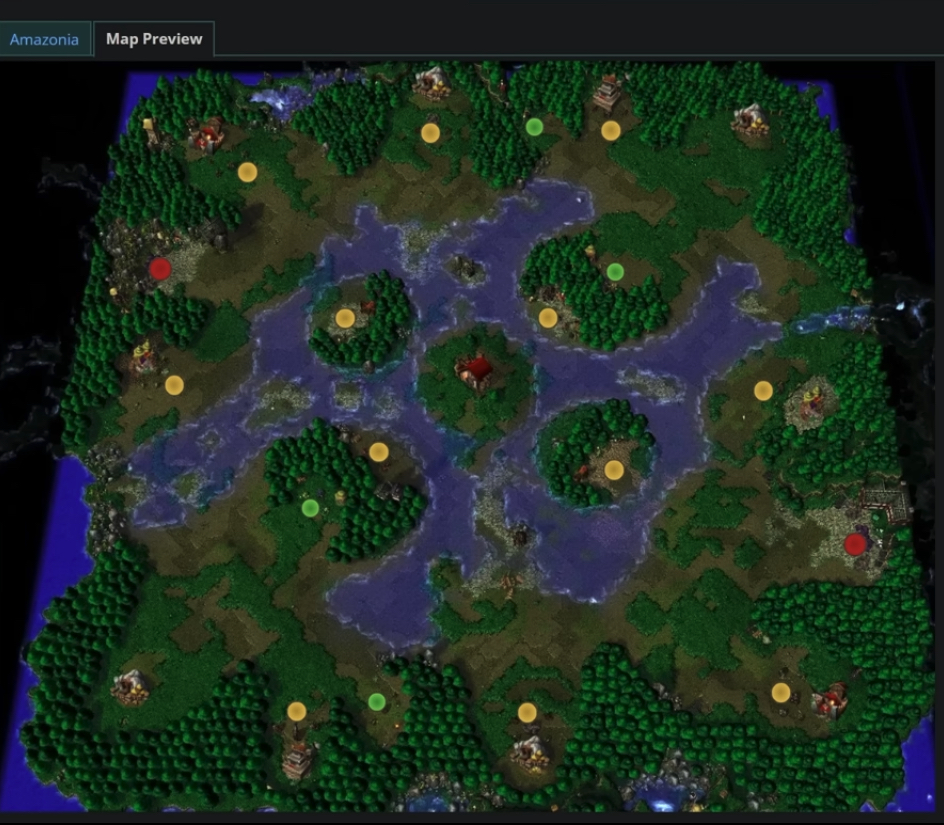
- Small Map Size and Short Rush Distances
- One of the smallest competitive maps
- Short rush distances favor early aggression
- Undermines mid and late-game strategies
- Limited Creeping Options and Strategic Diversity
- Few compelling creeping choices
- Predictable creeping sequence
- Difficult for second or third heroes to level up efficiently
- Repetitive strategies lacking creativity or adaptability
- Favors Certain Races Over Others
- Favors races with faster early-game potential (Night Elves, Humans)
- Race-specific exploits create imbalances
- Limited space and lack of macro opportunities hurt Orcs and Undead
B. Plunder Isle
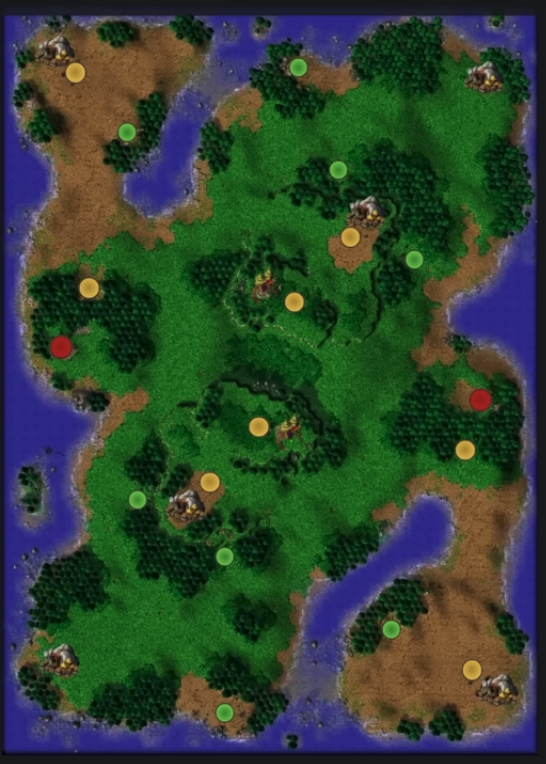
- Obscenely Long Map with Uninteresting Layout
- Enormous size creates slow-paced matches
- Sprawling layout leads to awkward travel distances
- Players often isolated, attempting to creep sparse camps
- Tedious matches with incidental combat
- Imbalanced Creep Camp Placement
- Uneven camp design (e.g., red-level Dragon nearly impossible to contest early)
- Smaller green camps fail to connect logically to meaningful creep routes
- Lack of strategic variety exacerbates issues
- Awkward Expansion Locations
- Oddly placed expansions in distant corners
- Disconnected from key areas and paths of travel
- Establishing expansions rarely viable unless massively ahead
- Stifles strategic macro growth
Tier C: Subpar Maps
A. Concealed Hill
- Lack of creep camps and item drops
- Scarcity of creep camps and item drops
- Less dynamic gameplay due to fewer strategic options for creeping and obtaining items
- Would benefit from additional creep camps to enrich gameplay and provide more opportunities for progression
- Problematic mercenary camp placement
- Mercenary camps positioned near the main base can be a significant issue
- Easy access to a second Barracks of instant unit production for certain races
- Breaks the balance early in the game
- Detracts from the strategic depth of the map
- Long travel times and limited strategic options
- Long travel times from one base to another (rush distance spans about a minute)
- Discourages early aggression and favors races that can establish expansions without much contest
- Travel times to key areas are significantly long
- Limits strategic options and often results in separate, solitary gameplay rather than direct interaction
B. Lost Temple
- Iconic but unbalanced map
- Remains an iconic map for Warcraft 3, evoking nostalgia and memories of legendary games
- Fame does not compensate for its significant imbalance
- Disrupts fair play due to the vast discrepancy in race performance across different matchups
- Favors specific races in certain matchups
- Some races have specific advantages based on spawn location
- Orc players often have an easier time compared to undead
- Undead typically struggle on this map due to inherent disadvantages in their race’s mechanics
- Forced fast expansion strategy for some races based on spawn locations exacerbates imbalance
- Central healing fountain leads to snowballing advantages
- Controlling the center gives a massive advantage due to the central healing fountain
- Player in control benefits from free healing and tactical superiority
- Often results in a snowball effect, extending dominance across the rest of the map
- Leads to less epic back-and-forth games and more one-sided victories
Tier B: Decent Maps
A. Lost Temple (Revisited)
- Despite Imbalances, Creates Interesting and Memorable Games
- One of the most iconic maps in Warcraft 3 history
- Consistently produces thrilling moments filled with creative strategies and improvisation
- Players often veto it due to unfair advantages dictated by spawn positions or race balance
- Undead players struggling heavily against Orcs
- Night Elves leveraging certain expansions
- Flaws, like unequal distances to expansions, create a level of chaos that heightens the entertainment factor
- Variety of Expansion Options and Late-Game Potential
- Shines when games extend beyond the 20-minute mark, evolving into a macro-heavy battlefield
- Numerous gold mines scattered across the map
- Secret expansions in each corner
- Possibility of taking over abandoned base positions
- Opens unique opportunities for both comeback strategies and unexpected twists
- Economic options add layers of complexity and decision-making during later stages
B. Melting Valley
- Balanced Gameplay with Strategic Possibilities
- Well-balanced, strategic design
- Leverages symmetry and equilibrium
- Offers more equalized paths to expansions and creep camps
- Ensures races don’t feel inherently disadvantaged
- Borrows elements from modern map pools
- Multiple points of entry to major locations
- Fair creep difficulty scaling
- Caters equally to aggressive rush strategies or macro-heavy play
- Opportunities for Unique Playstyles
- Allows players to experiment with a mix of base defenses and offensive maneuvers
- Medium rush distance
- Strategic high-ground areas
- Players can dictate unique pacing and strategies
- Choice to expand early or disrupt opponent’s economic plans
- Adaptability guarantees big plays and memorable moments
- Echoes some of the variety found in Lost Temple but with a slightly less chaotic execution
- Allows players to experiment with a mix of base defenses and offensive maneuvers
Lost Temple’s iconic status and late-game dynamics solidify its place in “Tier B: Decent Maps,” despite its divisive nature in competitive play.
Melting Valley, or any newer maps with similar balanced play, could serve as strong additions to Tier B due to their mix of fairness and creativity.
Tier A: Great Maps
A. Last Refuge
- Variety of creep camps and strategic options
- Numerous creep camps of varying difficulty
- Flexibility in opening strategies (early aggression or safe creeping)
- Multiple viable creep routes keep matches fresh and unpredictable
- Well-positioned expansion locations
- Balance risk and reward
- Central to economic gameplay without being too difficult to contest or overly exposed
- Allows for calculated economic strategies, adding tactical depth
- Balanced map layout with multiple attack paths
- Open layouts and several attack paths reduce dominance of a single defensive chokehold
- Dynamic engagements and tactical maneuvering throughout the game
B. Springtime
- Thoughtful map design with unique features
- Singular third gold mine serves as a potential tiebreaker in late-game scenarios
- Fosters strategic decision-making and evaluation of risk and reward
- Ample creeping options and strategic depth
- Symmetrically spread creep camps ensure steady flow of experience and items
- Varied progression routes and dynamic gameplay
- Balanced for most matchups
- Fair environment where most races can play to their strengths
- Supports hit-and-run tactics, macro play, and base expansions
C. Northern Isles
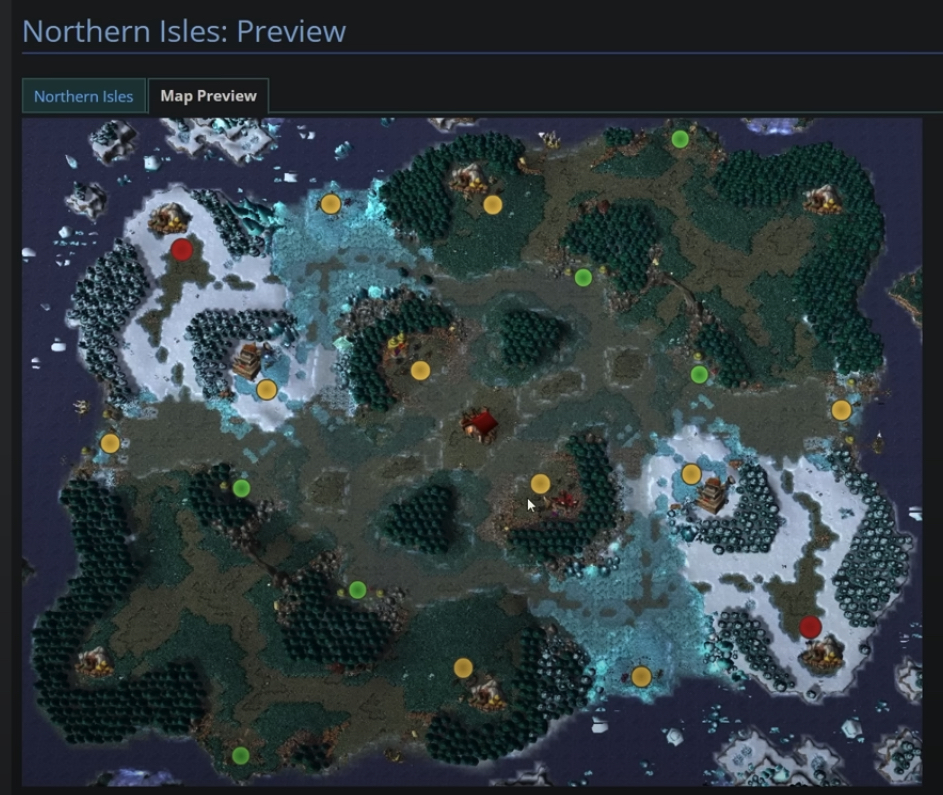
- Unique marketplace mechanic adds strategic layer
- Allows players to purchase items based on creeps defeated
- Enables creative use of extra gold and adaptation based on map history and dropped items
- Well-connected layout with multiple paths
- Minimal movement blockers
- Dynamic opportunities for ambushes, retreating, and re-engagement
- Fosters aggressive playstyles while maintaining space for macro strategies
- Balanced for all races and promotes interesting games
- Strikes a balance for all four races, minimizing vetoing in competitive settings
- Facilitates interesting matches with balanced terrain, ample creeping opportunities, and late-game strategic decisions
- Six gold mines and varied high-level objectives (magnetar camp and wide item pool)
VII. Tier S: Legendary Maps
Over the last 22 years of competitive Warcraft 3, only a few maps have earned the “Tier S” designation. One of the legendary maps rightly deserves to be in this list is:
Twisted Meadows
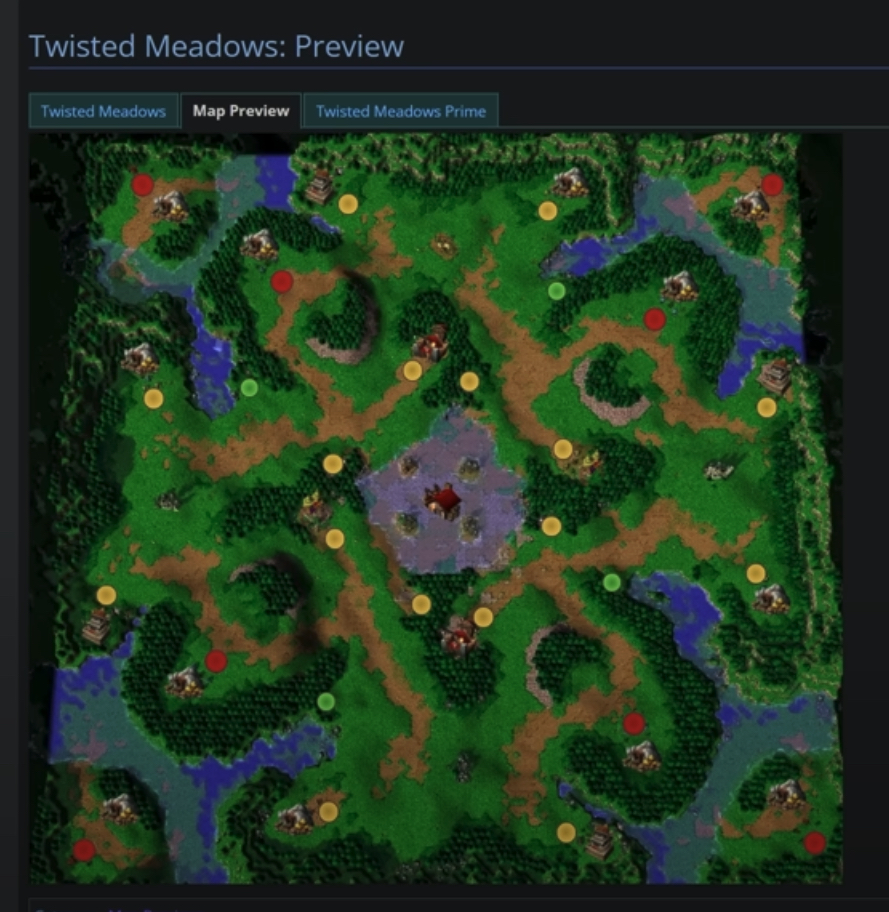
Twisted Meadows is undoubtedly an S-Tier map in Warcraft 3, famous for hosting many of the most iconic matches in the game’s history. This map is a cornerstone of Warcraft 3’s legacy, creating countless memorable moments and epic battles.
Twisted Meadows has seen over 100 legendary matches from top players worldwide, proving its status as a premier competitive map.
Evolution of Twisted Meadows
Though initially imbalanced, Twisted Meadows has evolved over time. Changes include:
- Creep Adjustments: Overpowered creeps like Rock Golems and Red Drakes were removed to balance gameplay.
- Experience Fixes: Camps dropping too much experience were adjusted to keep the game fair.
- Level 10 Drake Exploit: Originally, Undead players could exploit creeps with Gargoyles. This issue was fixed to prevent hit-and-run abuses.
These updates have made Twisted Meadows more balanced and fair for all players.
Conclusion
Ranking maps for competitive Warcraft 3 requires balancing both technical and experiential criteria:
- Amazonia struggles due to its linear pathing, limited creep diversity, and lack of strategic options.
- Last Refuge and Lost Temple cater to historical nostalgia but introduce balance and gameplay flaws.
- Meanwhile, modern maps like Northern Isles and Springtime represent thoughtful design, offering dynamic gameplay, variety, and potential for epic matches.
When evaluating maps, a healthy mix of balanced design, dynamic options, and opportunities for creative strategies ensures that each map plays an integral role in the competitive map pool!

